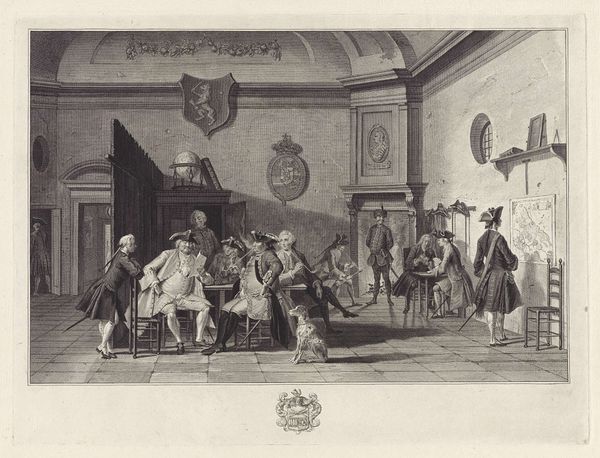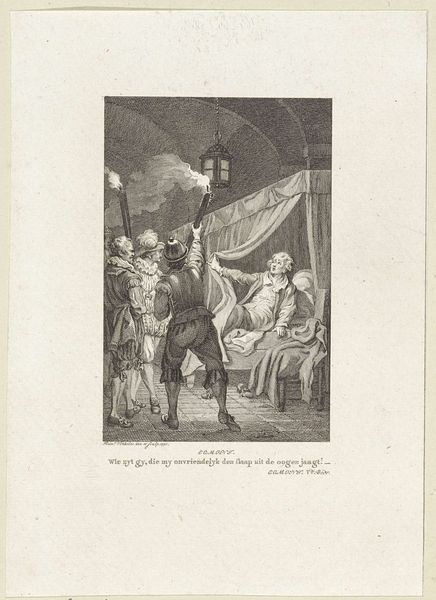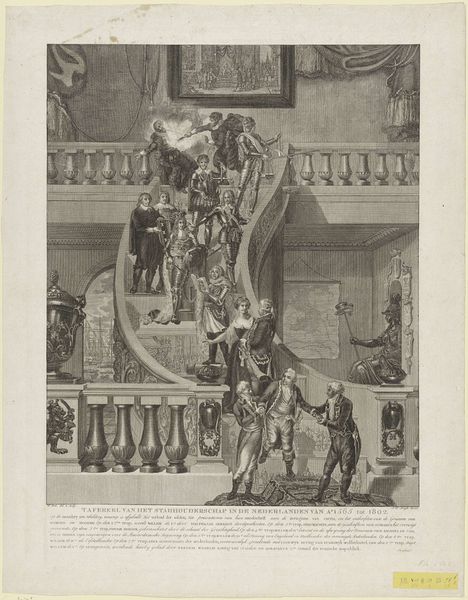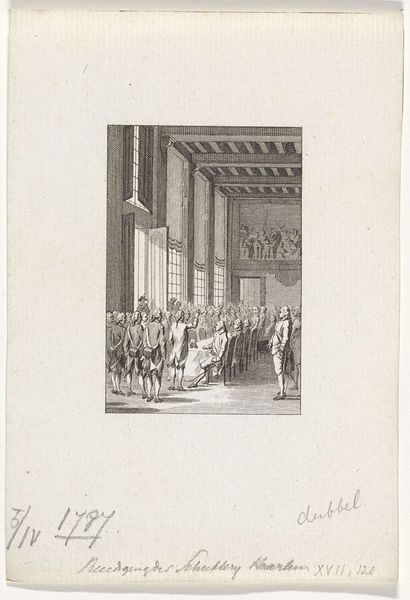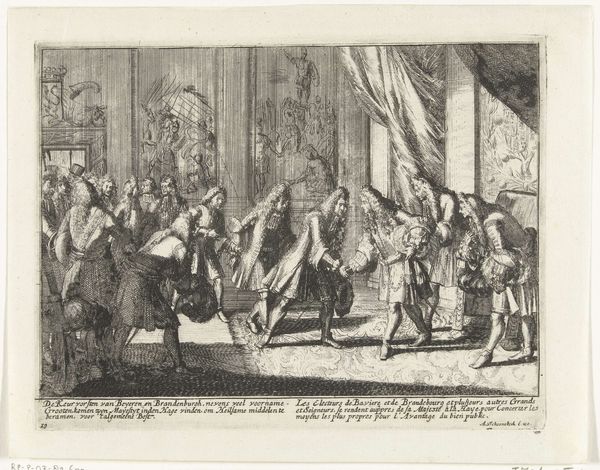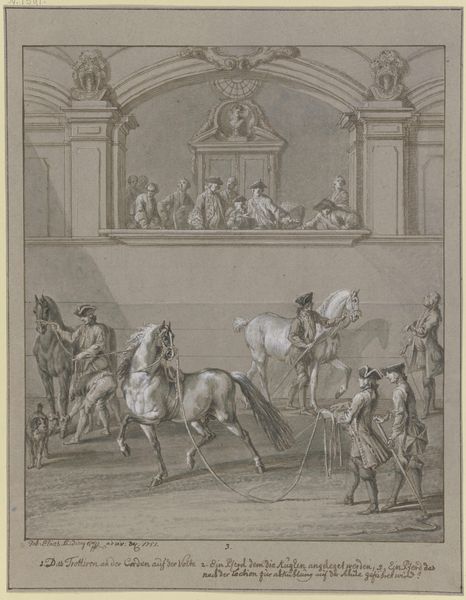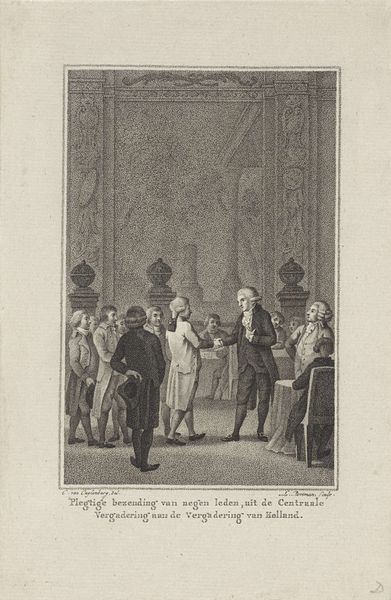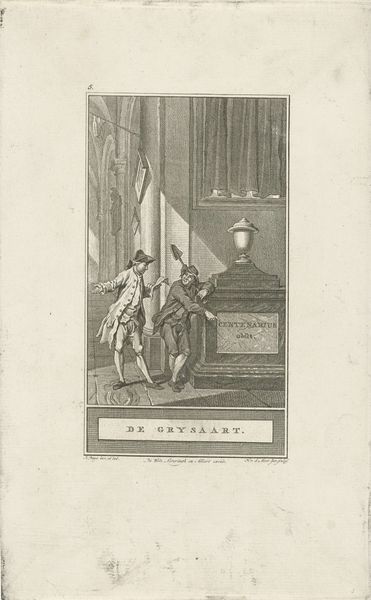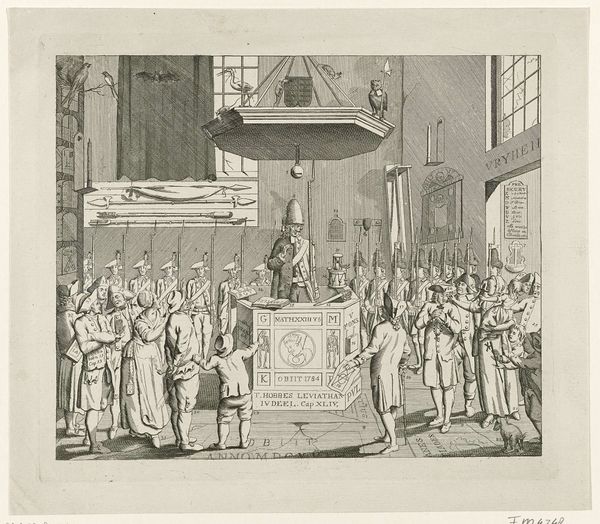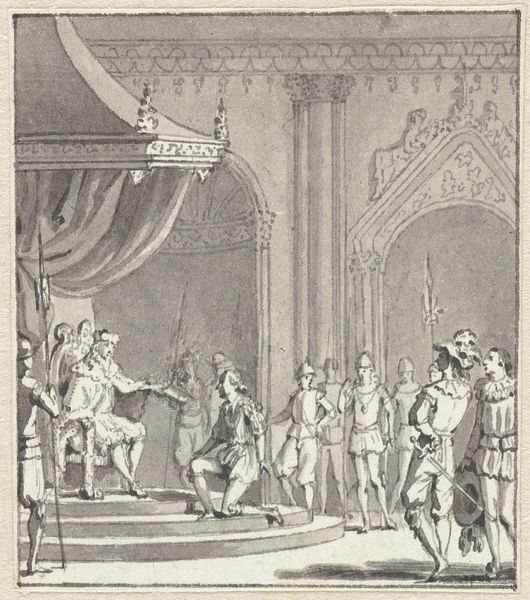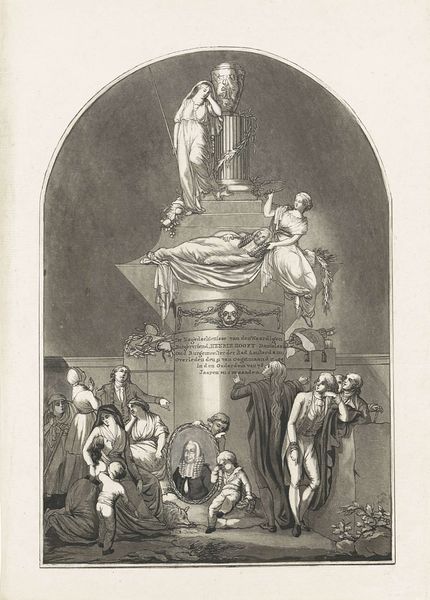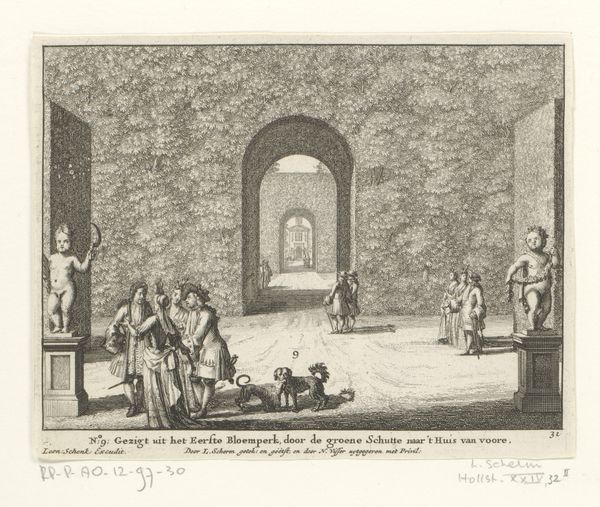
Portret van Willem I Frederik, koning der Nederlanden, en Frederik, prins van Oranje-Nassau 1788
0:00
0:00
print, engraving
#
portrait
# print
#
genre-painting
#
history-painting
#
engraving
Dimensions: height 472 mm, width 534 mm
Copyright: Rijks Museum: Open Domain
Curator: This engraving by Johann Gerard Huck, dating to 1788, is titled "Portret van Willem I Frederik, koning der Nederlanden, en Frederik, prins van Oranje-Nassau." Immediately, I find the composition remarkably staged, even theatrical. Editor: Yes, there's a palpable sense of constructed authority here. I notice how the scene is framed by imposing architecture and carefully positioned figures. It speaks to a calculated presentation of power. Curator: Notice the monumental urn centered behind the figures, adorned with what looks like laurel wreaths. It seems laden with classical allusions, suggesting wisdom and victory. Such emblems served to elevate the image of the monarchy. Editor: Exactly. The architecture and ornamentation situate the royals within a lineage of European power and influence. This wasn't merely about portraying two individuals, but also reinforcing the established socio-political hierarchy. But what’s particularly striking is the slightly detached expressions on their faces. Curator: Interesting point. Their stoicism could signify resolve or composure befitting their status, yet I think this expression represents, primarily, the period and a shared expectation of portrayal more than any attempt at authentic portraiture. Think about how many portraits follow these lines of representation. Editor: Perhaps. The surrounding space with figures attending to the horses creates a formal context which further emphasize their role as figures representing governance, power, military, and class privilege more than personal insight or individual psychology. Curator: Absolutely, and don’t overlook how the engraving medium itself played a role. Its ability to produce multiple copies meant this image could circulate widely, disseminating the message of a stable and legitimate ruling family to the masses. Editor: Making this image a powerful form of political propaganda, where their power transcends the physical painting into the political sphere of society through dissemination, shaping collective imagination in early modern Europe. Curator: Precisely. When viewed today, that power that was captured transcends as a record of an elite and their desire to control representation through visual cues. Editor: A valuable glimpse, indeed, into the construction of image, identity, and authority during that historical period.
Comments
No comments
Be the first to comment and join the conversation on the ultimate creative platform.
